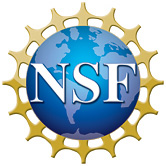Nanostained Glass Activity
Medieval stained glass windows are an early example of nanotechnology. While the artisans didn't know it at the time, the red and yellow colors came from nanoparticles of silver and gold embedded in the glass.
In this activity, visitors learn about the small size of nanoparticles and that they interact with light differently than macroscale particles. In addition, visitors are introduced to some current day applications of silver and gold nanoparticles. After a brief presentation, visitors help make a collaborative stained glass panel and also make take-away card that contains a small peice of nanostained glass.
Note: The materials preparation for this activity is quite involved. Please be sure to read through the activity guide and the watch the videos in the Materials Preparation section.
Materials
For the Presentation
- Nanostained Glass Power Point slides
- Meter stick
For the Take Away Card
- Take home cards, prepunched
- Lamination sheets, cut into 1.5" squares
- Pre-made nanostained glass pieces
- Scissors
- Colored pencils or crayons (optional)
For the Collaborative Stained Glass Panel
- ~60 mL of premade gold nanoparticle/PVA solution
- ~60 mL of premade silver nanoparticle/PVA solution
- Plexiglass panel (suggested size: 18"x24")
- Simulated liquid leading
- 2 labeled plastic cups to hold the solutions
- Several droppers
- Paper towels for spills
- Nitrile/latex gloves
- Safety glasses
- White poster board or foam core to go under plexiglass panel to make panel more visible



